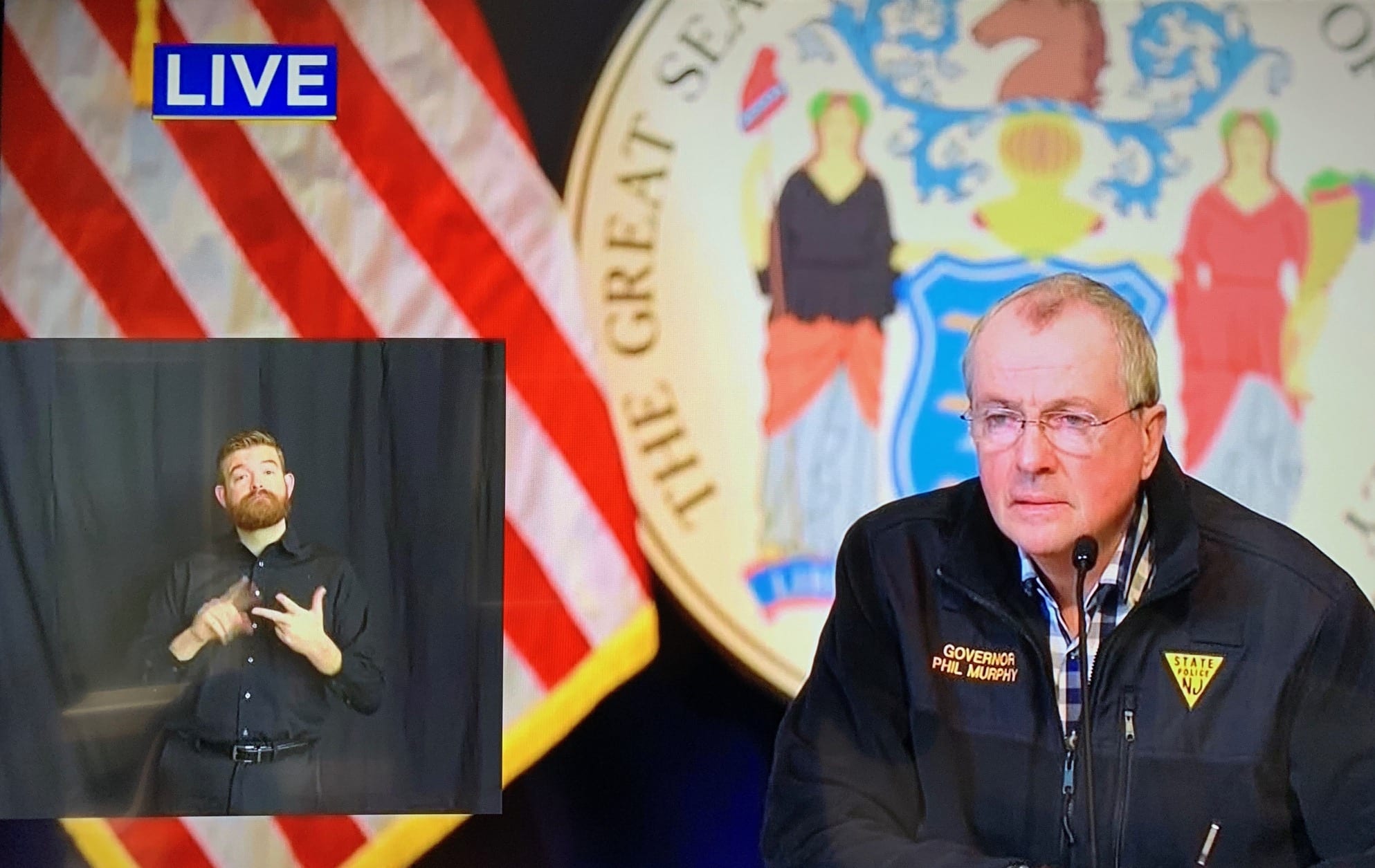Noah Buchholz, Lecturer in the Humanities Council and the Program in Linguistics, has been teaching American Sign Language (ASL) at Princeton University since the first course was established in 2017, and he now teaches a total of four ASL courses in the Program, ranging from beginner to advanced. Since the middle of March 2020, he has been part of a team interpreting New Jersey governor Phil Murphy’s daily press conferences during what is an unprecedented time in the State and worldwide.
A Certified Deaf Interpreter (CDI), Buchholz is working with two other CDIs and four hearing ASL-English interpreters, taking turns to interpret the press conferences Monday through Saturday. CDIs are nationally certified, professional interpreters who are Deaf themselves. The interpreting process involving CDIs typically consists of the hearing interpreter signing to the CDI what the hearing client says and then the CDI signing to the Deaf client what the hearing client says, based on the hearing interpreter’s interpretation. Conversely, the CDI signs to the hearing interpreter what the Deaf client says and then the hearing interpreter speaks to the hearing client what the Deaf client says, based on the CDI’s interpretation.
Although the process seems complex, there are several reasons for using a CDI in an interpreting situation, instead of just a hearing interpreter. First, most hearing interpreters are not native or near-native in ASL. Many spoken language interpreters are native in both of the spoken languages that they work with. This is not the case with ASL-English hearing interpreters. Many, if not most, CDIs are native or near-native in ASL, so they are able to help convey ASL messages more effectively. Second, CDIs, being Deaf themselves, have a deeper knowledge of Deaf culture and Deaf experience. This helps with the cultural mediation of the interpreting process. Third, many CDIs, having socialized with Deaf people with many different signing backgrounds as active members of the Deaf community, are highly skilled in using and comprehending various signing styles, including “atypical” signing styles.
During press conferences, CDIs help convey the message in a way that it is comprehensible to as many Deaf people with different signing backgrounds as possible. The hearing interpreter “transliterates” specific words and phrases and allows the CDI to decide how to sign them in a way in which they’re easily understood by most Deaf people.
Captioning is often pointed to as a solution for Deaf audiences but the quality of live captioning is not as reliable as the kind used on TV shows and movies. Also, for many Deaf people, English is not their first language. To some extent, the captions and ASL interpretation work together to maximize Deaf people’s access to the message as much as possible.
Buchholz writes, “the governor’s office has excelled in making the interpreting process possible. They were willing to make a transition from using hearing interpreters to using CDI-hearing interpreter teams for their press conferences. They’re willing to set up a camcorder that is dedicated to filming the ASL interpretation in order to ensure that the signing interpreter is in the frame at all times. They set up a TV monitor with the PowerPoint presentation on it behind the camcorder so that the interpreters may see important names and numbers easily. It is evident that the governor’s office is very eager to provide Deaf people optimal access to communication.”
Interpreting daily at the press conferences has been challenging for Buchholz. “It can be exhausting,” he writes. “The topics are, of course, heavy. It can be emotionally draining to interpret bad news over again and again. One important skill interpreters need is to be able to strike a balance between a healthy distance from the news while remaining engaged in interpreting these hard situations.”
The COVID-19 crisis is unparalleled in modern times and this assignment has been nothing like any Buchholz has experienced before. He concludes, “I can’t stop the press conference and ask for clarifications; I have to make many difficult translation decisions quickly and keep going without stop. The gravity of the situation definitely puts more pressure on the interpreting process, but I feel motivated to do this kind work because I know this is very important for many Deaf people.”
Read more about the ASL courses here.
















